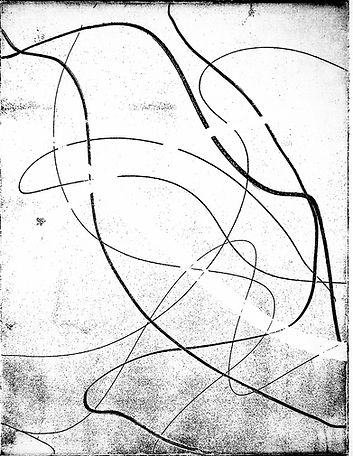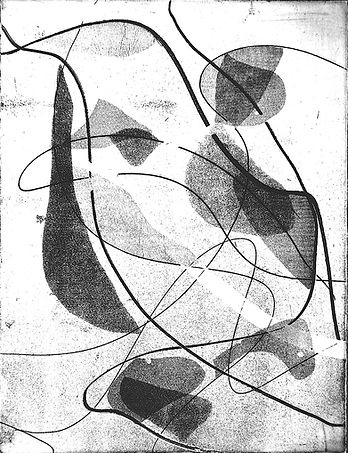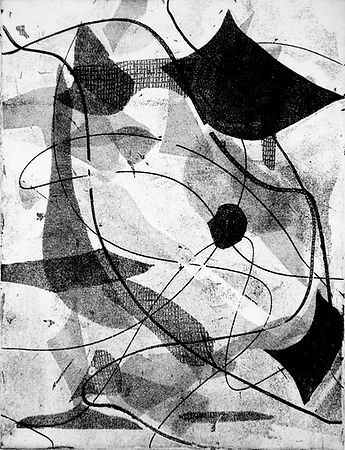Abstract Expressionism: Exercise in Automatism
with Stanley William Hayter - 1984
In the fall of 1984 in Paris, France I studied in Stanley William Hayter’s printmaking shop Studio 17. As a student he had me create an experimental etching exercise plate which forever changed my perception of abstraction. This exercise involved the use of spontaneous intuitive energy - psychic automatism - in abstract line and composition. I recognize the importance of the Surrealist ideas of automatism and experimentation that were imbedded in this exercise which is not surprising given Hayter’s associations with the Surrealists in Paris when he began Studio 17 in 1933. Artists Like Calder, Lipchitz, Picasso, Stuart Davis, Andre Masson, and David Smith worked with him. The Germans invaded France during WWII which forced him to escape to New York. Much has been written about Hayter’s impact on many of the Abstract Expressionists artists when he re-establish this print shop in 1940. Expatriated Surrealist artists regrouped in the shop to work in a relaxed, informal and experimental atmosphere. The Abstract Expressionists who admired the Surrealists followed them there. These included Motherwell, De Kooning, Rothko, Baziotes, Gottlieb, and especially Jackson Pollock. I was surprised to find a very similar exercise plate in automatism was created by Pollock in 1944 - 45 and had absorbed many of Hayter’s ideas. This was to have a significant impact on Pollock’s transformation and the creation of his drip paintings using spontaeous automatist gesture.
The exercise began with a small plate blocked with transparent varnish. Hayter then directed me to trail lines across the plate with a needle in a particular way. These lines were to be made in a continuous single fluid movement that moved from one edge and off the other. It was important not to think or intellectualize the act: it was intuitive and “automatic” where movement was not activated by the hand or wrist but through the whole arm. The sensibility was something akin to the feeling of sumi-e brush painting, but with the difference that the whole surface rectangle of the plate was held in a kind of energy-tension. Essentially the engagement of the edges freed the “field” from becoming a figure/ground relationship. Line flowed directly on and off the edge of the plate. The dynamic compressions and divisions this made in the space of that rectangle, especially along the edges, was a whole new realization of abstract energy for me. Hayter also emphasized that you could turn the plate upside down or to one side, reorienting the internal energies of the composition - which made it unexpectedly fresh and interesting. This is a practice I still use as a way to find new visual possibilities in abstraction.
After each line was made, some in varying thicknesses, the plate was etched, the line was covered with varnish, another line was made, and so on. The transparent varnish allowed previous lines to be seen, so each new line was a response to previous ones. Hayter then had me clear off the varnish and consider the kind of spaces the lines had carved out within the body of the plate. He had me create small shapes from different soft ground impressions of cloth textures, which interacted with the line spaces without exactly following them. In an unpredictable way each layer of shapes determined the position of the next in a loose but interactive way, creating areas that played a game of compositional weight and balance while also remaining free from the contours of the lines. In the last stage black triangles were inserted where lines intersected, punching holes in the weblike mixture of lines and texture. This created a dynamic and complex over and underlapping of deep and shallow spaces. This use of the shapes of black spaces interwoven with abstract forms was to become a dynamic construction element in my expressionist work to follow. I recognized the qualities of this exercise plate resembled much I had seen in Hayter's own prints and his approach to working.
Stage 1

Stage 2

Stage 3

Stage 4

Jackson Pollack experimental
plate made at Studio 17, 1944-45
